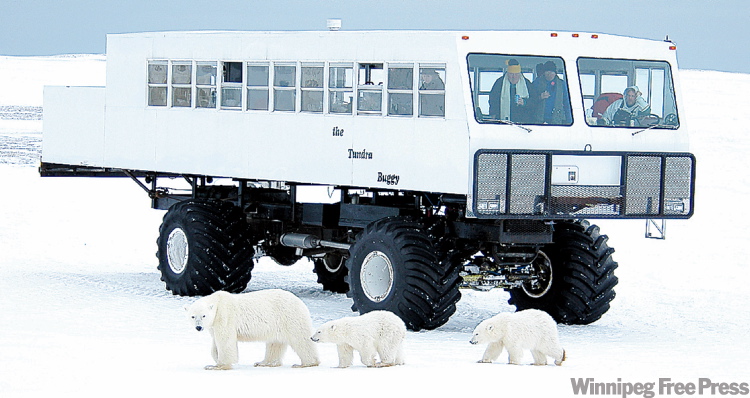People better get used to polar bears hanging out
Melting sea ice forces beasts to live closer to humans
Advertisement
Read this article for free:
or
Already have an account? Log in here »
To continue reading, please subscribe:
Monthly Digital Subscription
$1 per week for 24 weeks*
- Enjoy unlimited reading on winnipegfreepress.com
- Read the E-Edition, our digital replica newspaper
- Access News Break, our award-winning app
- Play interactive puzzles
*Billed as $4.00 plus GST every four weeks. After 24 weeks, price increases to the regular rate of $19.00 plus GST every four weeks. Offer available to new and qualified returning subscribers only. Cancel any time.
Monthly Digital Subscription
$4.75/week*
- Enjoy unlimited reading on winnipegfreepress.com
- Read the E-Edition, our digital replica newspaper
- Access News Break, our award-winning app
- Play interactive puzzles
*Billed as $19 plus GST every four weeks. Cancel any time.
To continue reading, please subscribe:
Add Winnipeg Free Press access to your Brandon Sun subscription for only
$1 for the first 4 weeks*
*$1 will be added to your next bill. After your 4 weeks access is complete your rate will increase by $0.00 a X percent off the regular rate.
Read unlimited articles for free today:
or
Already have an account? Log in here »
Hey there, time traveller!
This article was published 12/01/2010 (5740 days ago), so information in it may no longer be current.
A study on how Alaskan polar bears are responding to melting sea ice suggests that Inuit hunters may be right — climate change may already be causing more human-bear contact and rendering Canadian management programs for the mighty predator obsolete.
A study that recorded 25 years worth of bear sightings on the Alaskan coast suggests that polar bears are spending more time either on land or in the open ocean instead of the sea ice they normally use as a hunting platform.
Sea ice in the Beaufort Sea has been declining more quickly than in other parts of the Arctic. At the same time, humans and bears have been running into each other more often.

Biologist Karyn Rode of the U.S. Fish and Wildlife Service said that decline may be a big part of the reason why bear sightings on land more than tripled between 1979 and 2005. Open water sightings increased as well.
Between 1979 and 1985, only 12 per cent of bear sightings were not associated with ice. By 2005, that figure had risen to 90 per cent.
"There is a change," said Rode. "We don’t know what the consequences of that change are."
Rode warned that ice conditions vary widely across the Arctic and the same factors may not be at play for bears elsewhere in the North.
But Andy Derocher, a polar bear biologist at the University of Alberta and a leading global expert on the animals, said the Alaska findings may hint at what’s coming to Canada.
The community of Arviat on Hudson Bay has complained for several years of bear hazard. Derocher said declining sea ice on the bay may be forcing the bears along a strip of ice along the coastline that leads past the community.
Baffin Bay, where Inuit have long complained bear hunting quotas are too low, is another place where changing sea ice could already be affecting bear behaviour.
— Canwest News Service

